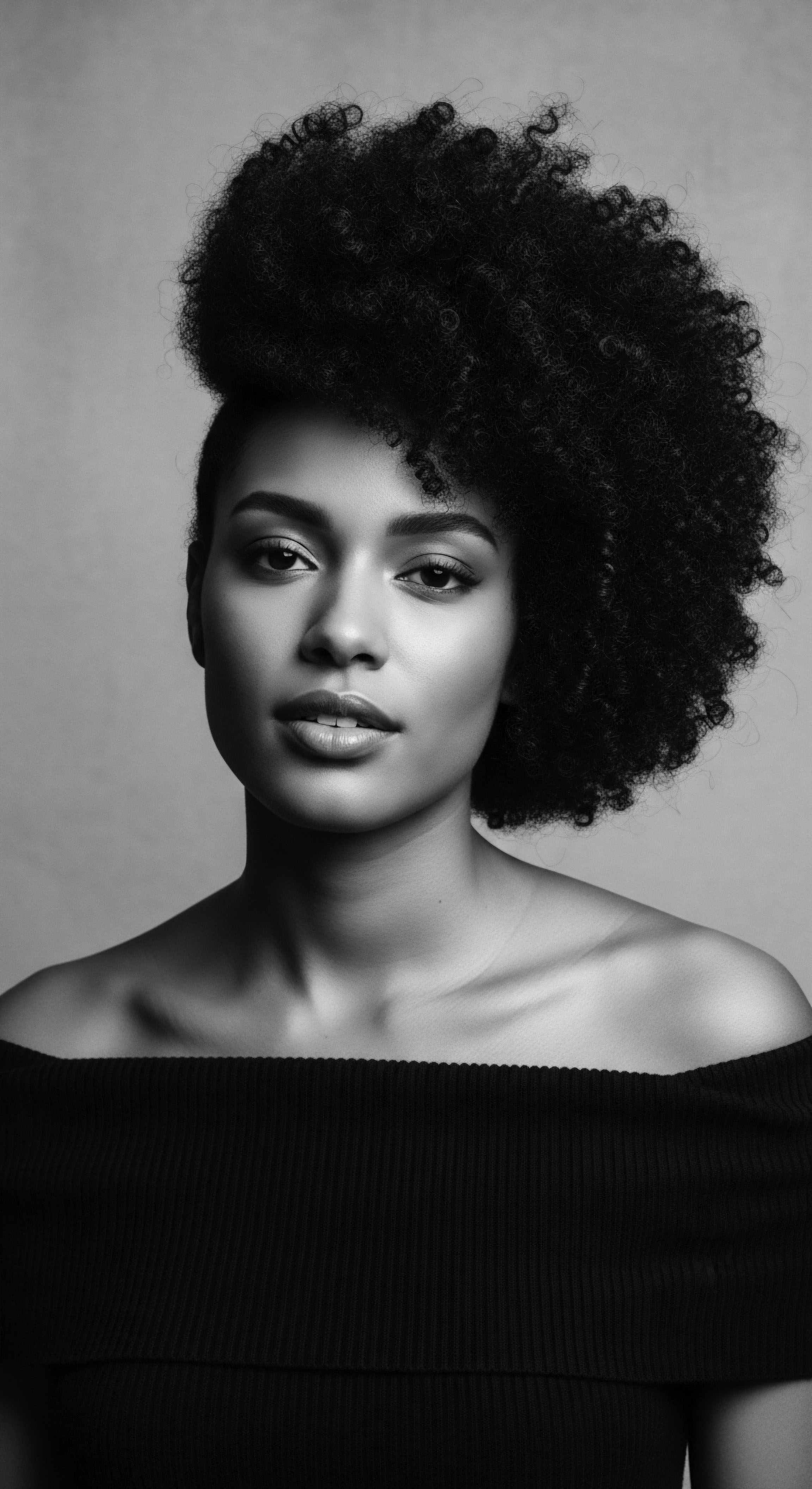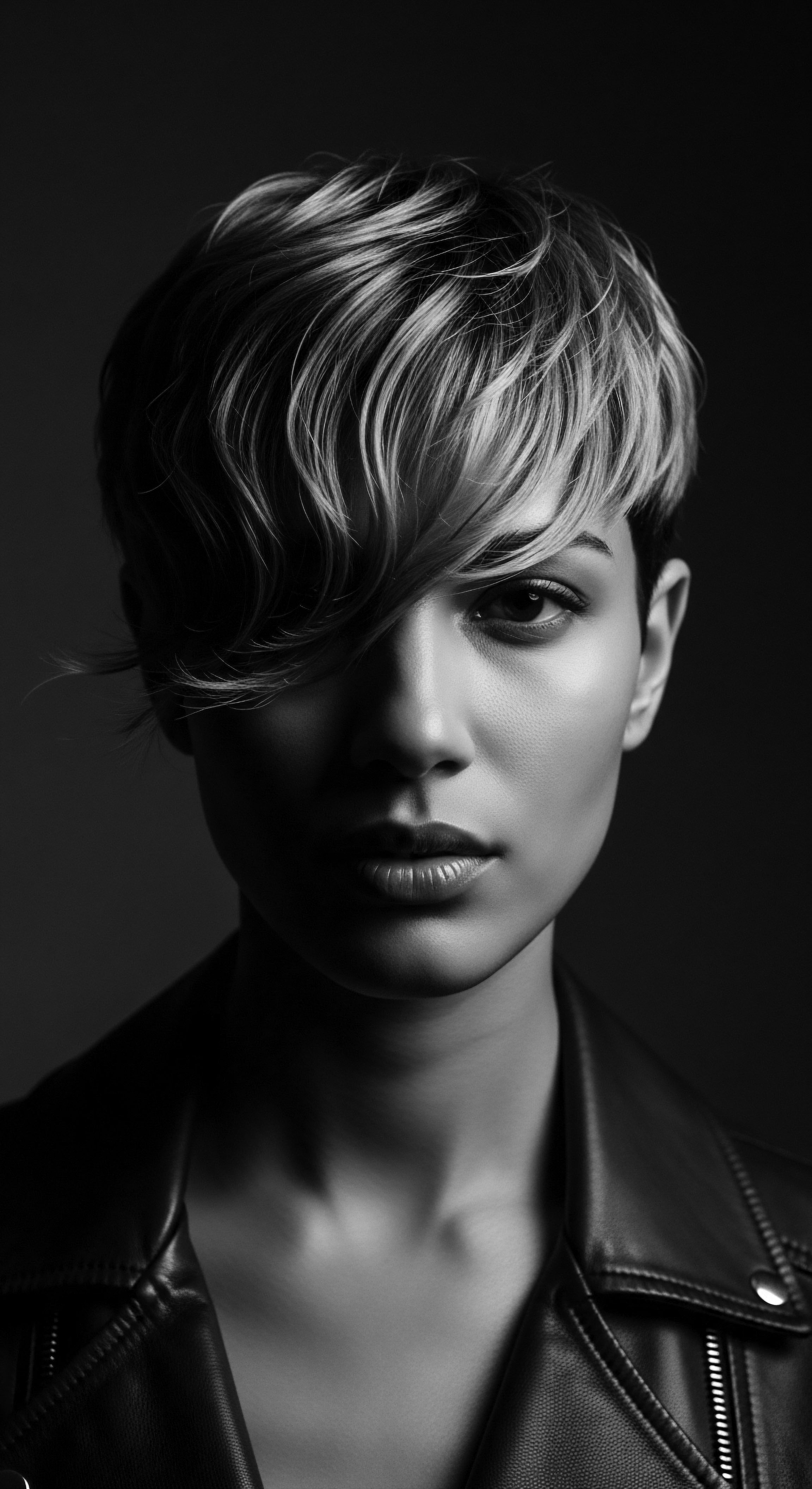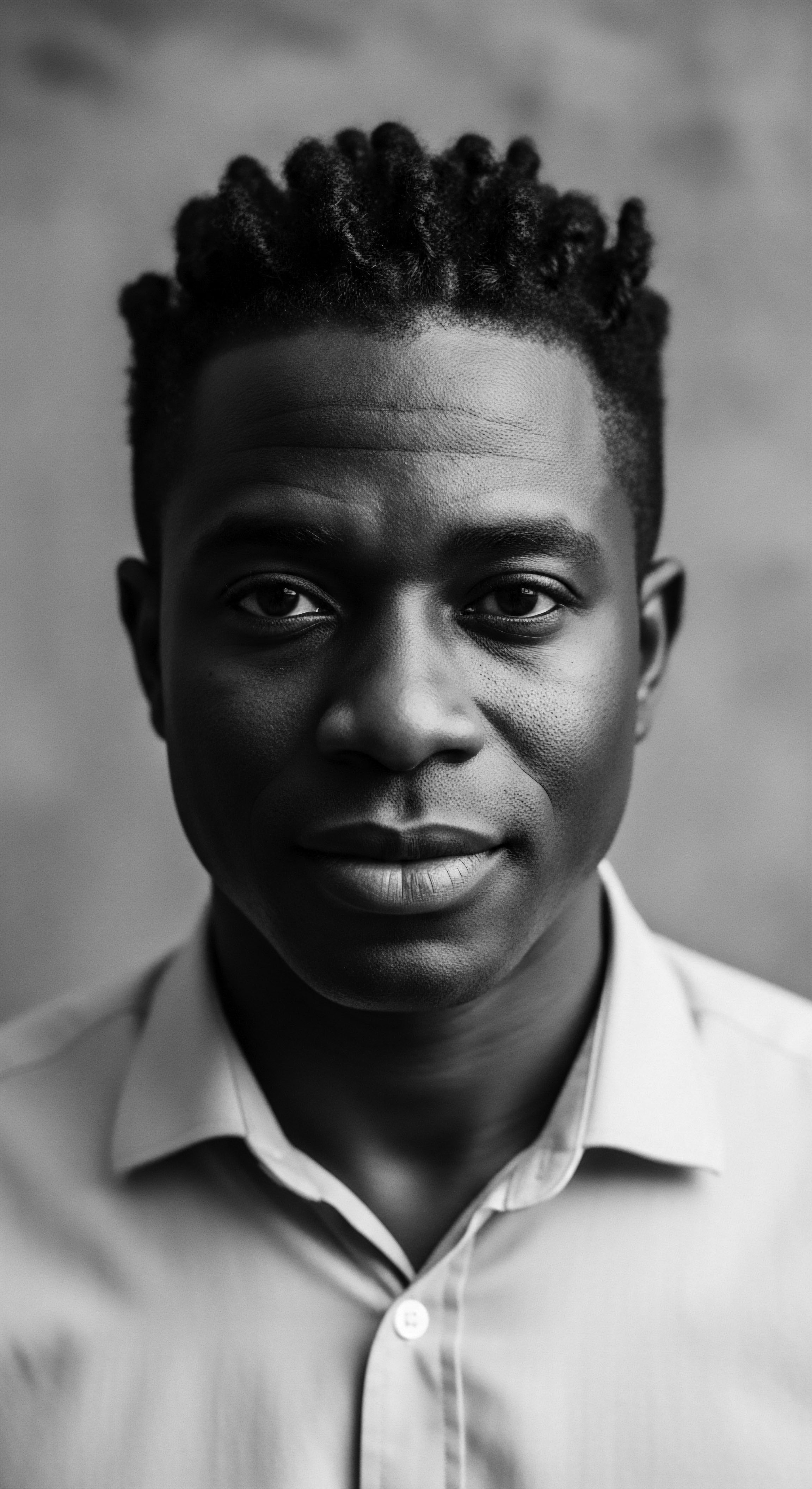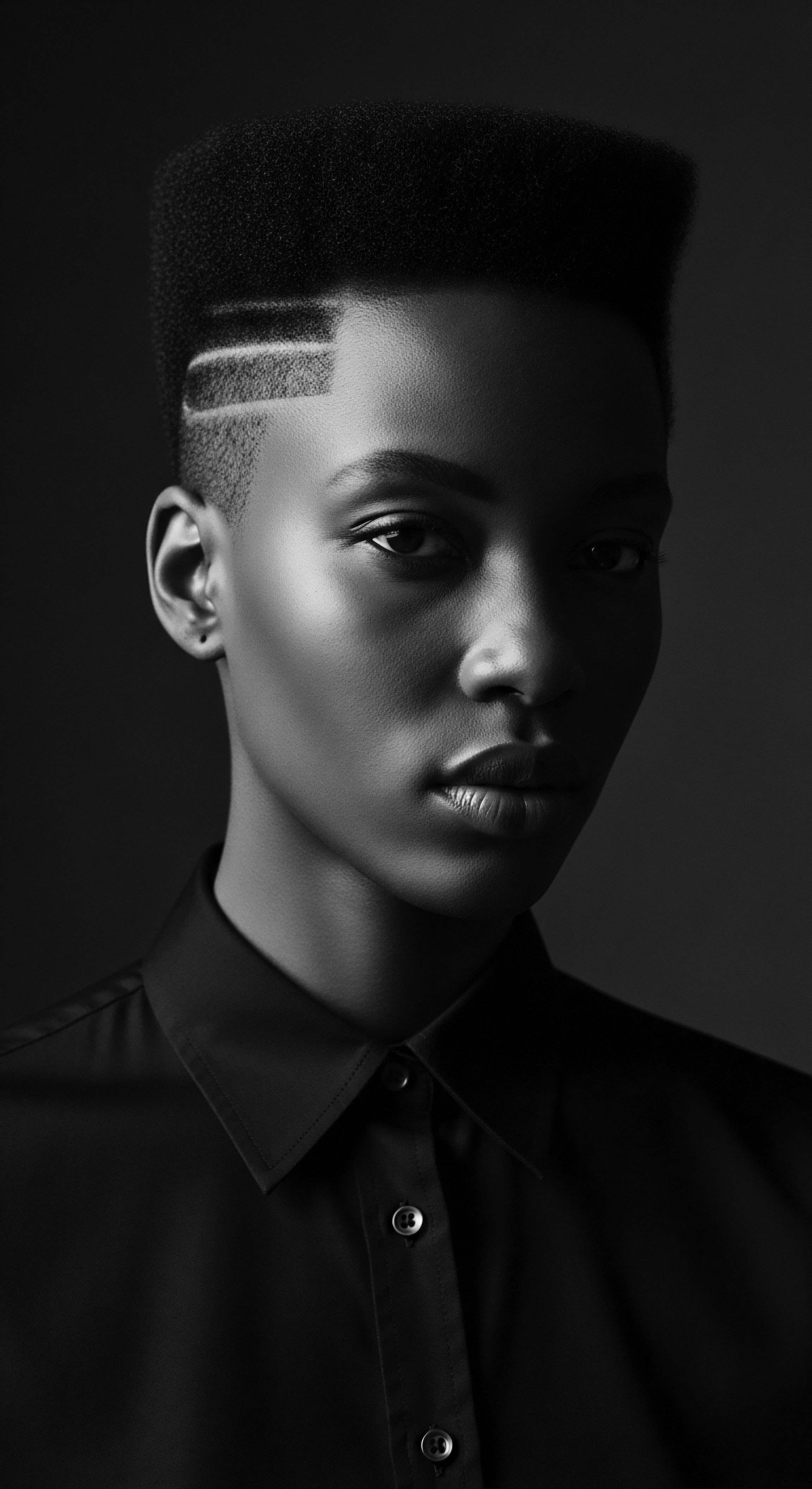
Roots
To stand upon the earth and feel the stories rise through our feet, up through our bones, into the very crown of our being – this is the spirit with which we approach the textured strand. Each coil, every wave, holds within it the whispers of generations, a living archive of resilience and artistry. The question of whether contemporary understanding can affirm the plant-based wisdom of our forebears for hair strength resonates deeply, not as a challenge to what was known, but as an illumination. It is a journey of tracing pathways from ancient hands, steeped in earth’s bounty, to the analytical gaze of today’s laboratories, seeking the fundamental harmonies.

The Intimate Topography of Textured Hair
The architecture of textured hair, particularly that of Black and mixed-race ancestries, presents a distinct cosmology. Unlike the often round or oval cross-sections of many hair types, Afro-textured hair frequently possesses an elliptical or flattened cross-section, contributing to its characteristic spiral and coiling patterns. This unique morphology means the natural oils, sebum, produced at the scalp, do not easily traverse the curved path of the hair shaft. This structural reality often leads to inherent dryness, a condition that the ancients instinctively understood and addressed through their extensive use of emollients and nourishing botanicals.
A study highlighted differences in lipid distribution across ethnic hair types, noting that African hair exhibited the greatest lipid content in all hair regions ❉ the medulla, cortex, and cuticle. This internal lipid richness, however, is often highly disordered, which may explain its increased permeability, making it more susceptible to moisture loss compared to Asian or Caucasian hair (Coderch et al. 2021). This insight from scientific investigation mirrors centuries of communal practice centered on sealing and protecting the strand.
The outermost shield of the hair, the cuticle, composed of overlapping cells like shingles on a roof, also varies. While Asian hair can exhibit a greater number of cuticle layers and a thicker cuticle, providing strong mechanical properties, African hair is often described as having a sparse outer cuticle, making it naturally more porous. This porosity means hair readily absorbs moisture but also releases it just as quickly. The intrinsic fragility of textured hair, marked by a propensity for knots and breakage, has been documented microscopically.
Research examining Black African hair observed a tight, coiled structure and a higher incidence of knots and breaks when compared to hair samples from Caucasian and Asian volunteers, even when collected through gentle combing (Khumalo et al. 2007).
The inherent structure of textured hair, with its unique coiling and lipid distribution, underpins ancestral practices aimed at moisture retention and breakage prevention.

Ancient Understandings, Modern Parallels
Long before microscopes unveiled the cuticle’s delicate scales or gas chromatography identified specific fatty acids, ancestral communities possessed a profound empirical understanding of hair’s needs. Their knowledge was not codified in scientific papers, but woven into daily rituals, passed down through touch and oral tradition. They recognized that hair, like a precious crop, required careful tending, specific nutrients, and consistent protection from the elements.
The plants they turned to were not chosen by accident; their efficacy was observed, refined, and perfected over countless generations. This deep, sensory knowledge, rooted in intimate connection with the earth, laid the groundwork for what we now seek to understand through contemporary investigative methods.
- Shea Butter ❉ Extracted from the nuts of the African shea tree, this rich butter has served for millennia as a sealant, its fatty compounds offering substantive moisture and protection to hair.
- Aloe Vera ❉ Known across many cultures for its soothing gel, ancestral practices applied aloe to calm the scalp and condition strands, addressing dryness and irritation.
- Hibiscus ❉ Flowers and leaves from this plant were used in traditional washes and rinses, believed to cleanse gently and impart a natural sheen while strengthening hair.
| Characteristic Cross-Sectional Shape |
| African Hair (Textured) Elliptical or Flattened |
| Asian Hair Round |
| Caucasian Hair Oval |
| Characteristic Natural Oil Distribution |
| African Hair (Textured) Limited travel down shaft, prone to dryness |
| Asian Hair Even distribution |
| Caucasian Hair Even distribution |
| Characteristic Cuticle Layers |
| African Hair (Textured) Sparse outer cuticle, higher porosity |
| Asian Hair Thicker, more compact layers |
| Caucasian Hair Similar lipid order |
| Characteristic Mechanical Properties |
| African Hair (Textured) More fragile, lower resistance, prone to breakage |
| Asian Hair Strongest mechanical properties |
| Caucasian Hair Intermediate |
| Characteristic Lipid Content |
| African Hair (Textured) Highest overall lipid content, often disordered |
| Asian Hair Lowest lipid amount |
| Caucasian Hair Higher ordered lipids |
| Characteristic These biological distinctions highlight the ancestral imperative for care rituals that prioritized moisture, strength, and gentle handling for textured hair. |

Ritual
The hands that kneaded plant pastes, the voices that chanted over steeping herbs, the communal spaces where hair was braided and adorned—these were the crucibles of ancestral hair care. It was a holistic practice, intimately bound to spiritual well-being, community identity, and the very rhythms of life. The question of how these deeply rooted practices relate to hair strength invites us to consider the active compounds within these traditional plants, substances that quietly offered their benefits for centuries, now drawing the attention of modern investigation.

Unearthing Botanical Potency
Across continents, specific plants became cornerstones of hair health for diverse communities, their efficacy passed through generations. The modern lens now seeks to pinpoint the mechanisms at play within these botanicals, often affirming the ancestral intuition.

The Castor Bean’s Enduring Legacy
In many African and Caribbean traditions, castor oil , derived from the seeds of the Ricinus communis plant, has been a staple for promoting robust hair. Its thick, viscous nature made it a prized sealant, used to coat strands and scalps. Scientific inquiry now confirms the oil’s primary constituent, ricinoleic acid , a monounsaturated fatty acid, contributes to its humectant and moisturizing qualities, helping to lock in moisture and prevent breakage (Dr. Axe, 2024).
This acid also supports circulation to the scalp, creating an environment conducive to healthier hair (Davines, 2023). The knowledge that this oil could protect and strengthen hair was a cornerstone of hair care for many, aiding in length retention for styles that might otherwise lead to excessive dryness and damage. This historical use, especially Jamaican Black Castor Oil, reflects an ancestral ingenuity in processing and applying natural resources for specific hair needs.

Rice Water ❉ An Echo from Ancient Eastern Shores
While often associated with East Asian cultures, the practice of using rice water for hair health has gained global appreciation. For centuries, women in China, Japan, and Southeast Asia have utilized the starchy water from rinsing or fermenting rice to achieve long, resilient hair (University Health Center, Nebraska, 2023). This practice aligns with modern understanding ❉ rice water is rich in vitamins, minerals, amino acids, and inositol (Cécred, 2025). Inositol, a key component, can penetrate the hair shaft, repairing damage and protecting strands by reducing surface friction, which contributes to elasticity and strength (International Journal of Cosmetic Science, 2010; Dr.
Idriss, 2024). The continuity of this ancient ritual, now chemically explained, underscores the universal pursuit of hair vitality through natural means. The Yao women of Longsheng, China, are a powerful living example; their tradition of using fermented rice water has historically contributed to their reputation for exceptionally long hair, often reaching floor length (VIORI Shampoo Bars, 2023).

Fenugreek and Amla ❉ South Asian Elixirs
In the vibrant tapestry of South Asian hair traditions, fenugreek seeds ( Trigonella foenum-graecum ) and amla (Indian gooseberry, Phyllanthus emblica ) stand as powerful remedies. Fenugreek seeds, or Methi, were traditionally used to combat hair fall and thinning. Contemporary analysis reveals they are a source of protein and nicotinic acid, both vital for hair growth, and contain lecithin, which hydrates and strengthens dry, damaged hair (WORLD JOURNAL OF PHARMACEUTICAL RESEARCH, 2013). Research also indicates that compounds like saponins and flavonoids within fenugreek may promote improved blood circulation to the scalp, nourishing follicles (IJARSCT, 2025).
Similarly, amla has been a cornerstone of Ayurvedic medicine for centuries. Its rich content of vitamin C, antioxidants, and minerals offers benefits that align with ancestral claims ❉ promoting healthy hair growth, conditioning the scalp, and enhancing hair quality. Studies have shown amla oil can influence hair growth rates and has protective properties (Healthline, 2018). An animal study from 2009 suggested that a herbal solution with amla powder was more effective at stimulating hair growth than minoxidil in rats (Healthline, 2018).
More recently, a clinical trial on women with androgenetic alopecia found that an oral amla product significantly increased the anagen (growth) phase of hair (Yazdanparast et al. 2024). These findings validate the generational trust placed in these botanicals.
Modern research is progressively unraveling the bioactive compounds within ancestral plants, providing scientific frameworks for long-held traditional knowledge concerning hair strength and health.

Relay
The journey from ancestral hearths to contemporary laboratories represents not a chasm, but a continuous relay of understanding. The wisdom of our ancestors, honed by observation and inherited knowledge, serves as a beacon, guiding modern scientific inquiry towards plant compounds that hold verifiable benefits for hair strength and vitality. This collaborative exchange strengthens our appreciation for the enduring efficacy of these plant-based legacies.

How do Ancestral Observations Guide Modern Scientific Inquiry?
The intricate knowledge systems built by our ancestors offer an invaluable starting point for contemporary research. When communities consistently relied on a particular plant for specific hair concerns, they did so because it yielded discernible results. This empirical evidence, gathered over centuries, provides scientists with a powerful filter, narrowing the vast botanical world to those species with the highest probability of possessing beneficial biochemical properties. Consider rosemary oil , a herb with a long history of use for invigorating the scalp and hair.
Traditional applications often involved infusions or direct oil massages. Scientific investigations now point to its ability to support circulation to the scalp, which in turn delivers essential nutrients to hair follicles, potentially stimulating growth (Healthline, 2023). A significant trial in 2015 compared rosemary essential oil to minoxidil, a conventional hair loss treatment, and found rosemary oil to be similarly effective in encouraging hair regrowth, with the added benefit of reducing scalp itching (Panahi et al. 2015). This example powerfully illustrates how historical usage, often anecdotal, can lead to scientific validation, bridging eras of knowledge.
The Basara Arab women of Chad provide a compelling historical example of ancestral plant use for hair strength within a specific cultural context. Their renowned practice involves using chebe powder , a mixture of local herbs, seeds, and plants such as Croton zambesicus and cherry kernels (Chebeauty, 2023). This powder is traditionally applied to coat and protect natural hair, preventing breakage and locking in moisture. While current scientific studies on chebe powder specifically for tensile strength are still emerging, its widespread and consistent use among the Basara women, who are known for exceptionally long and strong hair, provides strong anecdotal evidence.
This practice underscores an ancestral understanding of sealing the hair shaft to prevent environmental and mechanical damage, thus promoting length retention through reduced breakage (Chebeauty, 2023). The very spiral structure of textured hair, being prone to dryness and breakage, makes protective practices like those involving chebe powder particularly pertinent (The House of Shayaa, 2023).

Plant Alchemy and Hair’s Inner World
The connection between ancestral plant uses and modern scientific understanding often lies in the interaction of bioactive compounds with the hair’s fundamental structure and growth cycle. Hair, predominantly made of keratin protein, derives its strength from the integrity of its cortex and the protective layer of its cuticle. When ancestral remedies consistently improved hair strength, they likely did so by influencing these cellular and molecular processes.
- Ricinoleic Acid ❉ The presence of this fatty acid in castor oil allows it to penetrate the hair shaft, contributing to elasticity and strength. It also promotes blood flow to the scalp, enhancing the delivery of nutrients to follicles (Davines, 2023).
- Inositol ❉ Found in rice water, this carbohydrate works to repair damaged hair and reduce surface friction, which contributes to greater hair elasticity and smoothness (Cécred, 2025).
- Flavonoids and Saponins ❉ These compounds in fenugreek seeds may stimulate blood circulation and provide nourishment to hair follicles, supporting growth and resilience (IJARSCT, 2025).
The very act of applying these botanical preparations—whether through oils, rinses, or masks—often involves massage, which itself stimulates the scalp and blood circulation, a physical benefit that complements the chemical actions of the plant compounds. This holistic approach, integrating topical application with physical manipulation and often, mindful intention, reflects the interconnectedness inherent in ancestral wellness philosophies.

Reflection
The living library of textured hair, its heritage a testament to enduring wisdom, reveals a profound truth ❉ the quest for strength and radiance is not a recent innovation. It is an echo from the source, a tender thread extending through generations of care and community. As we witness contemporary understanding affirming the botanical intuition of our ancestors, it is more than a mere validation; it is a homecoming. Each discovery of a plant compound that reinforces a long-held practice solidifies the sacred bond between humanity and the earth’s offerings.
It reinforces the spirit of the ‘Soul of a Strand,’ recognizing that our hair is not merely a biological structure, but a vibrant conduit of identity, lineage, and collective resilience. The rhythms of ancestral care, once whispered secrets, now find their voice in a language that spans time, inviting us to honor the past as we shape the future of textured hair’s magnificent legacy.

References
- Cécred. (2025). Why You Should Be Incorporating Rice Water Into Your Hair Routine .
- Coderch, L. Oliver, M. A. Barba, C. & Marti, M. (2021). Differences in the diffusion coefficients of African, Caucasian and Asian hair. Biotech Spain .
- Davines. (2023). The Magic of Castor Oil for Hair Growth .
- Dr. Axe. (2024). Castor Oil for Hair Growth ❉ Benefits and How to Use .
- Dr. Idriss. (2024). Rice Water for Hair Growth .
- Healthline. (2018). Amla Powder for Hair Health ❉ Growth and Other Benefits, Side Effects .
- Healthline. (2017). Amla Oil ❉ Hair Growth and Hair Health .
- Healthline. (2023). Rosemary Oil for Hair ❉ Growth, Uses, and Benefits .
- The House of Shayaa. (2023). How Diet and Nutrition Supernaturally Impact Afro Hair Health with The House of Shayaa .
- International Journal of Cosmetic Science. (2010). Review on the benefits of utilizing rice water for hair growth .
- IJARSCT. (2025). A Review on Fenugreek Seeds .
- Chebeauty. (2023). Chebe Powder ❉ The Ultimate Solution for Hair Breakage .
- Khumalo, N. P. Gumedze, F. & Ngwanya, M. (2007). What is normal black African hair? A light and scanning electron-microscopic study. International Journal of Dermatology, 46 (suppl 1), 14-18.
- Panahi, Y. Taghizadeh, A. Marzony, M. & Sahebkar, A. (2015). Rosemary oil vs. minoxidil 2% for the treatment of androgenetic alopecia ❉ a randomized comparative trial. Skinmed, 13 (1), 15-21.
- University Health Center, Nebraska. (2023). Rice water for hair ❉ Is it the miracle social media claims?
- VIORI Shampoo Bars. (2023). Understanding the Benefits of Longsheng Rice Water in Hair Care .
- WORLD JOURNAL OF PHARMACEUTICAL RESEARCH. (2013). Methi a wonderful herb and its therapeutic uses .
- Yazdanparast, T. Khezri, S. & Abdollahimajd, F. (2024). The effect of an oral product containing Amla fruit (Phyllanthus emblica L.) on female androgenetic alopecia. Natural Health Research, 11 (1), 1-8.
